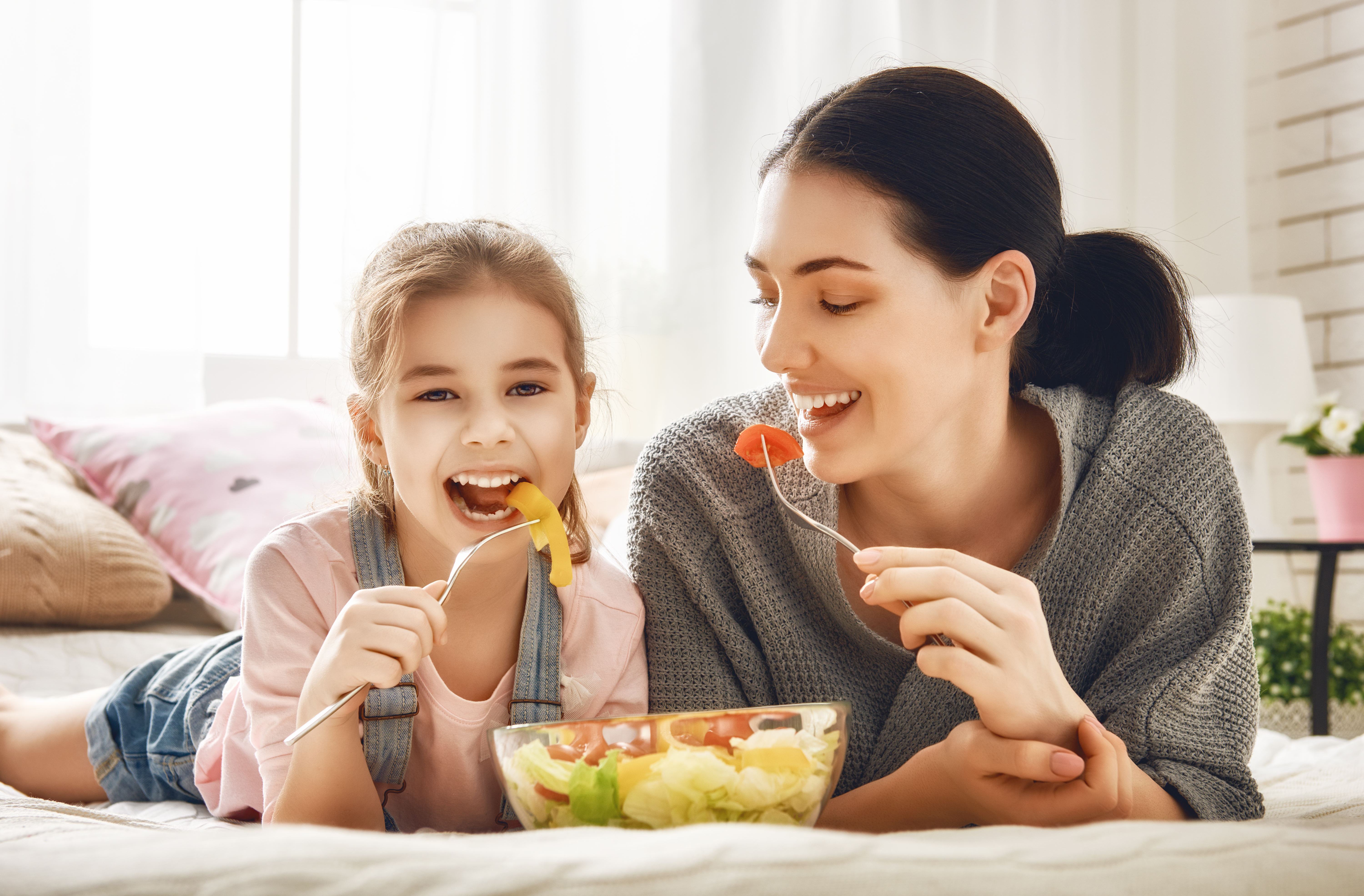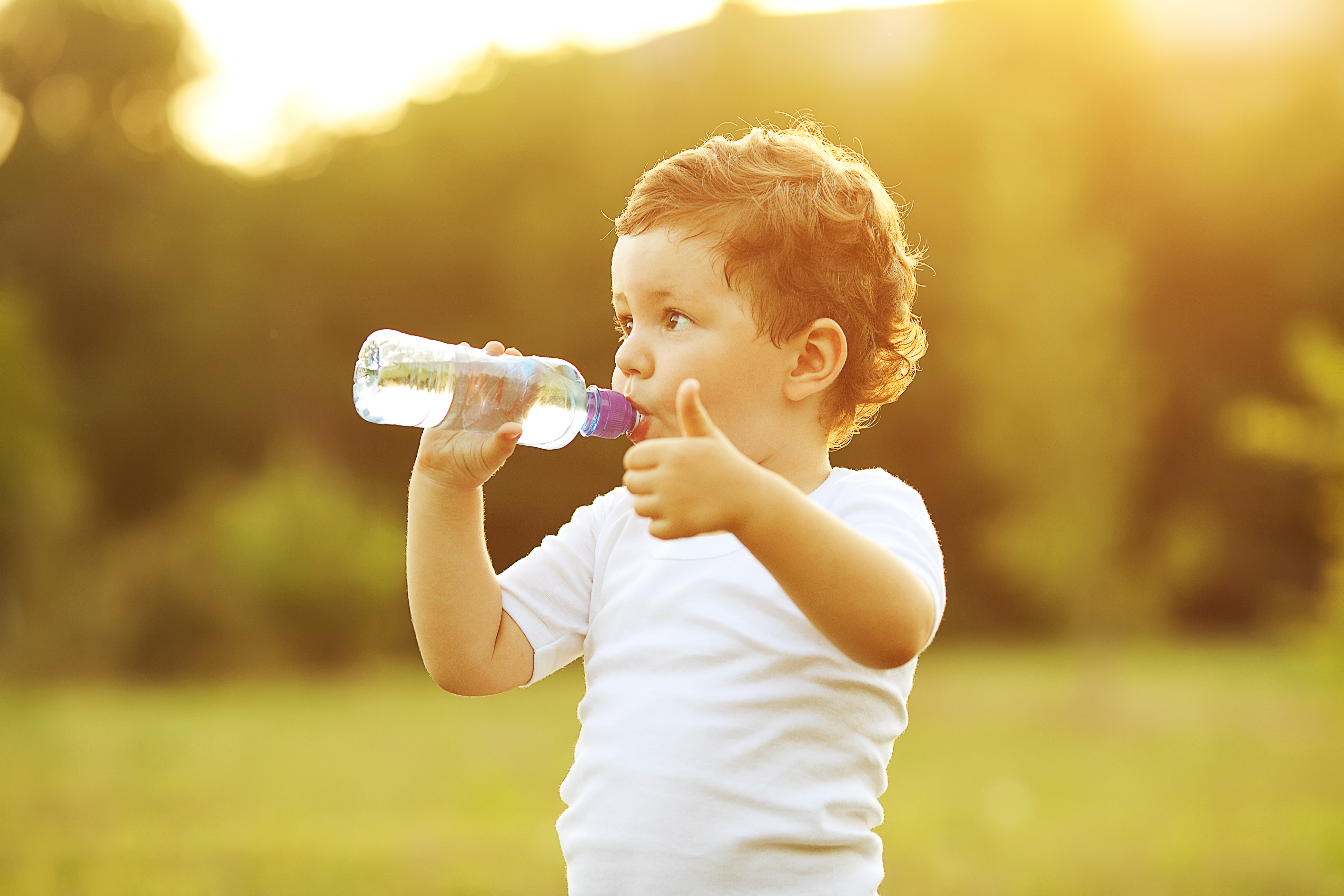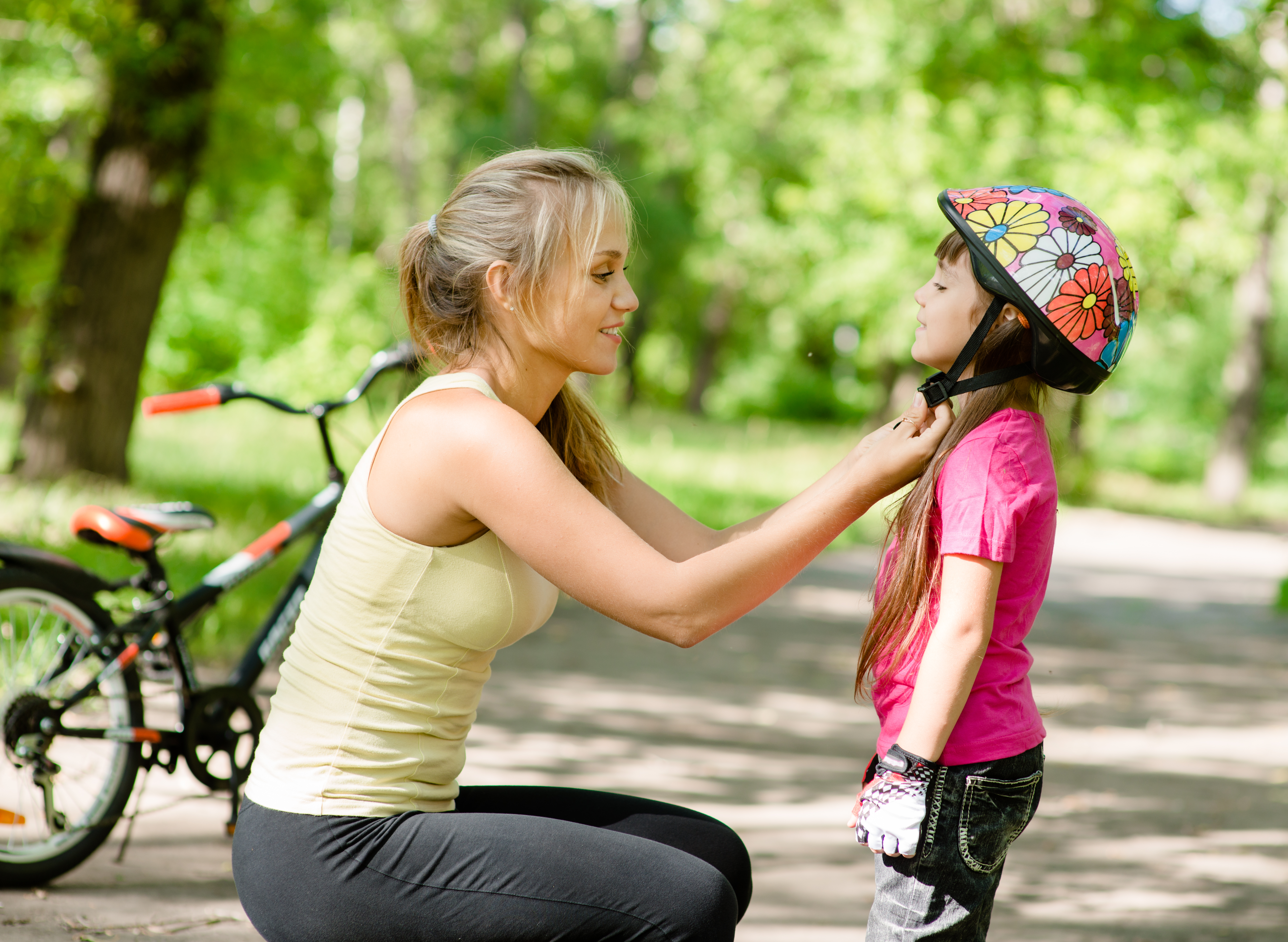As a father to four active kids, I know parenting is hard. And because it can be so demanding—I’m here to help make it as rewarding for you as I can. I am not going to give you a long list of rules (I’m sure you and your kids are sick of them already). Instead, I will suggest some ways in which you can bond as a family and have fun, while implementing healthy habits that will serve your children for life—and which your kids will, hopefully, thank you for!

1. Doctor who?
While befriending your family doctor may not be the most obvious first item on our to do-list, it can certainly pay dividends! Rather than be terrified, this will give your kids (and your doctor!) something to look forward to.
For kids who are horrified of going to medical appointments, knowing what to expect can be a big help. To help manage your kids’ anxiety, lay out, step-by-step, how the appointment will go and what might happen. But when you do so, try to avoid using vague terms such as: “the doctor is just going to give you a check-up” or “the doctor will look at your throat”. Instead, explain each step in a clear, detailed way your child can easily understand, but that won’t scare them.
For example: “after you and I go into the exam room, this nice doctor will listen to your heartbeat with a special tool” or “this lovely nurse will ask you to open your mouth, say ‘aah’, and look at you while you do that”. And, if your child asks why the doctor or nurse might want to do that for, you can enlist the help of American actress Kristen Bell and say that it’s to “spot the bad guys and kick them out”.

2. Eat the best, leave the rest
While there is a lot of debate on what the ‘healthiest’ diet is, there is one thing we can all agree on: feeding your kids mostly plant-based meals with some organic meats, fish and poultry can only be a good thing. If you do that – you will be in great company!
For example, celebrity supercouple Giselle Bundchen and Tom Brady feed their kids mostly meals comprised of veggies and whole grains like brown rice and quinoa. The kids also sometimes have some meat such as chicken, duck, and organic steak or wild salmon. Actress Natalie Portman, whose kids are also on a mostly plant-based diet, prepares tempeh bacon (made of whole soybeans) for her children when they want something more ‘naughty’. While your relationship with dairy is up to you to decide on, Natalie switched dairy milk for coconut milk and cashew-based cheese for some added plant-based goodness!

3. Hydrate – it’s great!
It may not be easy to encourage your kids to drink more of water—but it is definitely worth it! Replace sugary drinks with some wonderful, cool H2O. Make it readily available for your kids: if water is the only drink in sight, then your child is more likely to request it.
If you are still having trouble with getting your kid to drink more water, here are some things you can try to help make this drink more exciting:
- add some flavor and color to the water jug by dropping spliced apples and lemons into it
- use a colorful cup and some fun straws
- add ice cubes to the glass and water
- use very diluted sugar-free fruit squashes (but only if you must)
- set an example by enjoying water yourself!
Some kids manage better if you give them half a glass and ask them to drink it all. Others do better if given a full glass and asked to only drink half of it. Experiment and see which way works best for your child! And don’t forget to offer your kids a small (but healthy) reward if they manage to drink their target number of glasses.
“Some kids manage better if you give them half a glass and ask them to drink it all. Others do better if given a full glass and asked to only drink half of it”
– Sergey Young
And if all else fails, bring out some heavy artillery. Remind your children that Beyoncé drinks “at least a gallon of water with lemon a day”. Now, how can you say no to Beyoncé?

4. Too fit to quit
Playtime and activity are very important. After all, being active is a natural instinct for young kids. As parents, our job is to help our children nurture that impulse and take regular physical activity into adolescence and beyond. Obesity rates are on the rise (with 1 in 5 children and adolescents in the U.S. now being affected by it), so it has never been more crucial to encourage your kids to stay active. As a bonus, active kids mean smarter kids. This study showed that as little as 4 minutes of intense exercise increased the ability to focus among 9–11 year olds, while another study revealed that 20 minutes of fast walking increased reading comprehension in 10-year-olds. Let’s get moving!
Hopefully, your children shouldn’t need much convincing to move more. Go on walks together, take family hiking trips, ask your kids to teach you their favorite sport. If they do not have one yet, help your child find a sport that he or she enjoys by trying out different activities together. For example, Former First Lady Michelle Obama regularly takes her two daughters on bike rides. Naomi Watts bought a trampoline to help her three kids burn energy in a fun way. And Jessica Alba even makes dance TikTok videos with her daughters, which definitely count as working out!
Lastly, if your kids like to challenge themselves and achieve concrete goals, consider getting them a Fitbit Ace (ages 8+), so that they can track their steps and active minutes. The positive reinforcements of on-device celebrations and virtual badges can help instill healthy habits that don’t feel like work.

5. Un-gadgetize!
Now, this may be a tough one for many parents. I limit my kids to 20 mins of gadget use per day (which includes watching videos, playing computer games, or just sitting on their smartphones). Try to find a time limit that would work for your family.
For the youngest kids, who don’t yet know how to tell time, try using visual and sound cues to help children keep track: “When the time is up, it’ll look and sound like this.” For serious offenders, you can use time-limiting apps. For example, ‘Screen Time’ app is great for customization—you can preset blocked periods like bedtime or homework time, while Qustodio can block inappropriate content and send you Smart Activity Reports to stay on top of your child’s activity.
When your child is ready to exercise some more self-control when it comes to controlling their use of gadgets, ask your kid to stop at a natural break (such as the end of an episode or level). Before your kid gets on a device, talk about what they want to play and what will be a good place to stop. Set the limit together and hold to it. Explain to your children that if they can show you they can be partners in moderating themselves, there can be more flexibility. In the meantime, work on introducing more off-screen fun activities—such as board games or reading paper books—that will make the ‘real world’ much more tempting.

6. Meditate!
Teaching kids to look after their minds is just as important as teaching them how to care for their bodies. Getting your children into the habit of meditating early on—along with establishing healthy sleep routines and limiting screen time—can really help teach them how to calm their minds and use healthy coping mechanisms for the rest of their lives. Studies have shown that teaching kids mindfulness practices help reduce stress, hyperactive behavior, ADHD symptoms, and even depression. Yet only 1.6 percent of U.S. children meditate.
If you already meditate, you can introduce your kids to the practice at your own pace, as long as it is done in a fun and engaging way (it may be hard for little ones to learn to be still). Otherwise, enlist the help of meditation ‘coaches’. For example, Audible offers ‘Guided Meditation for Kids’ to help them relax, unwind, and sleep better. Headspace offers meditation for kids, customized for three age groups (5 and under, 6-8 and 9-12), where they will practice breathing exercises, visualizations and try some focus-based meditation.

7. Be kind and grateful
“If you want to find happiness, find gratitude,” said American writer and speaker Steve Maraboli. I couldn’t agree more. Teaching your kids acts of kindness and how to be grateful is one of the best ways to show them the road to happiness. And as parents, all we want is for our children to be happy.
“Teaching your kids acts of kindness and how to be grateful is one of the best ways to show them the road to happiness”
– Sergey Young
Start by setting a good example. Thank the waiter for taking an order (and remind your kid to do the same) and say ‘thank you’ to your child when they offer you any help at all. Thankfully (no pun intended!), many celebrities can serve as role models. For example, Jim Carrey started an initiative that helps farmers grow rice more efficiently in poorer countries. Actor Zack Galifianakis made friends with an 87-year-old woman who worked at a laundromat (and rented her an apartment after he came to know that she was homeless). Comedian Russel Brand even sometimes takes homeless people to dinner and keeps them company for a night.
But grand gestures, like the above, are not mandatory, of course. Teach your kids the little things that can make a big difference for their friends, classmates, and family members.

8. Be social
Social skills give our kids a broad range of benefits. They are linked to better relationships with their peers and greater success in school (as well as later in life). For example, this study found that kids who were better at sharing, listening, and cooperating with each other at age 5 were more to be employed full-time by age 25. Another study found that a child’s social skills in kindergarten might be the biggest predictor of success in adulthood!
Friendships are good for children’s mental health. They also give kids opportunities to practice skills such as effective problem-solving and conflict resolution. So help your children discover the value of friendships and community support! Arrange playdates, volunteering at your community, or even just arranging multi-family Sunday brunches.
If your kids are still very little, teach them basic social overtures: the polite way to start a conversation or join a group of kids who are already playing together. These can be discussed and brainstormed at the dinner table, and then practiced in real life at playdates and other activities!

9. Be smart. Don’t start!
With tobacco killing more than 480,000 people annually in the U.S. alone (more than alcohol, road accidents, illegal drugs combined!), this may well be one of the vices we fear most for our kids. Never underestimate the dangers associated with being ‘just curious’ about cigarettes – let alone smoking ‘only a few’ cigarettes a day. Tell your kids not only about the health risks associated with smoking but teach them also to withstand peer pressure and decline – firmly but politely – cigarettes (or alcohol and drugs, for that matter!) if offered. Role-playing may help a lot here: practice different scenarios and different ways of saying ‘no’, so that your child is never caught off guard.
Iterate to your kids that smoking is not cool. Singer Adele gave up smoking after completely losing her voice and having to cancel concerts as a result of her unhealthy habit. “Smoking sucks!” agrees ex-smoker and Hollywood actress Katherine Heigl. “The one thing I would say to my kid is, ‘It’s not just that it’s bad for you. Do you want to spend the rest of your life fighting a stupid addiction to a stupid thing that doesn’t even really give you a good buzz?’”. Well put, Katherine!

10. Stay safe!
Nutrition, activity, and community are all important parts of a healthy lifestyle. But in order to extend the healthy lifespan of your kids, other risks should be reduced to a minimum. Teach your children that they need to make good choices regarding general safety, personal hygiene (e.g. washing hands), social distancing, and everything else from safe driving to avoiding drugs.
Car accidents are the top cause of death for young adults aged 16 to 24 in the U.S. Parents should teach—and practice—safe driving. This includes never drinking before getting behind the wheel (for example, in my family, we have a zero-alcohol driving policy). And if, as a parent you did consume some alcohol, always take an Uber or public transport. Your kids learn a lot by simply watching you.
While I’ve recommended sports as an opportunity for physical fitness, some sports are riskier than others. Ensure your kid wears a helmet when riding a bike. A helmet can make all the difference between serious injury and walking away from an accident unharmed. Check that your child has all the necessary protection appropriate for the type of sport they are practicing – this can include anything from footwear to eye protection (talk to your children’s sports coach, if required). And try to abstain from any extreme sports, please!
The points raised above are not meant to scare you of all the things that could go wrong with your little ones. But rather, they are all the things you could do right—from the very start! I hope you have found some useful tips or inspiration to get your whole family eating healthy, exercising regularly, being social—all in a fun manner. Because every parent wants their kids to be healthy, happy, and loved. It is the reason behind everything we do for them, whether they agree with that or not—although, with the help of this article, they should be more inclined to! And, if you are looking for even more inspiration to get your family healthier, feel free to discover them in my book ‘The Science and Technology of Growing Young’ or by signing up to my mailing list on sergeyyoung.com.

